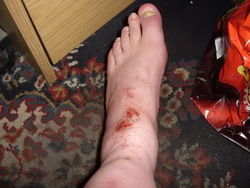Catalyst
Revision as of 19:08, 5 June 2011 by Bio-rich-time-poor (talk | contribs) (→Sodium Methylate (NaOCH3))
Sodium Hydroxide and Potassium Hydroxide are popular catalysts for home biodiesel production. They are mixed with Methanol to form a Methoxide. Sodium Methylate is mentioned for information only , it is not recommended for home production.
Contents
Sodium Hydroxide (NaOH)
- inexpensive
- harder to dissolve into solution with Methanol
- solid Glycerol by-product
- accurate titration required to avoid making excess soap
- soaps will settle quicker than Potassium
- come in pearls which are less likely to become airborne unlike flakes.
Potassium Hydroxide (KOH)
- more costly
- easy to dissolve into solution with Methanol
- come in flakes which can become airborne, ensure you use face protection.
- liquid Glycerol by-product
- forgiving with inaccurate titrations
Sodium Methylate (NaOCH3)
- pre-mixed catalyst in methanol (25%,30%,32% by weight)
- very costly around 4 x the cost of mixing (Sodium Hydroxide and Methnaol)
- no water present therefore no soaps produced.
- very dangerous, used for large scale production when the effect on yield make it cost effective.
- not for home production use.
Storage and handling
Both Potassium Hydroxide and Sodium Hydroxide catalysts should be kept in a dry, sealed airtight container, If left exposed the catalyst will absorb moisture and Carbon Dioxide from the atmosphere and weaken the catalyst. Ensure it is kept away from animals and out of the reach of children.
Protective gloves and eye equipment must be worn during handling, as both are strong bases and will dissolve flesh into soap.
Care should be taken with "flake" products to avoid inhalation.
